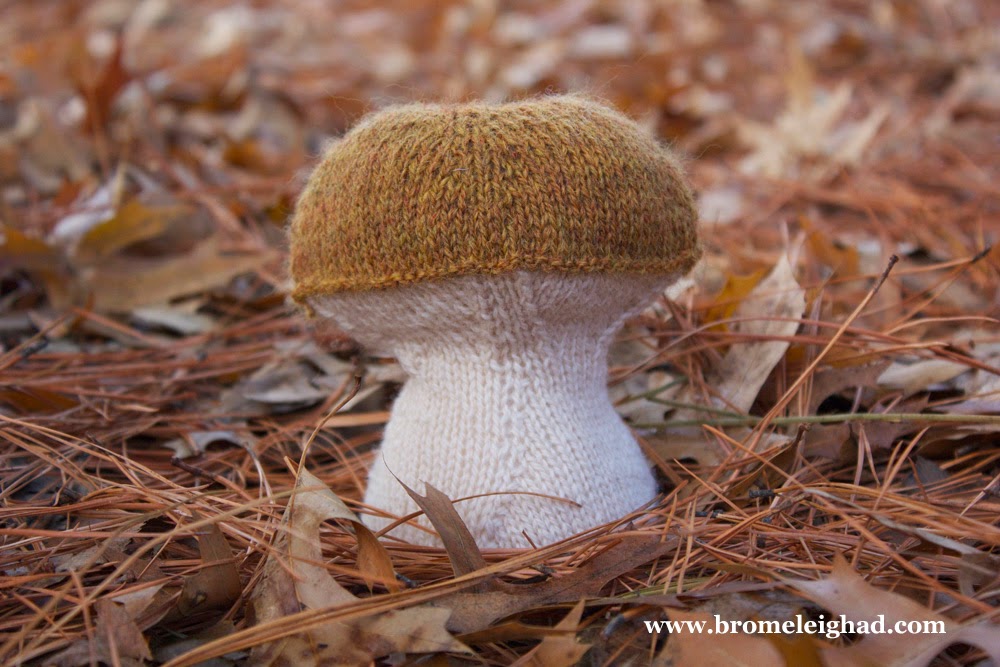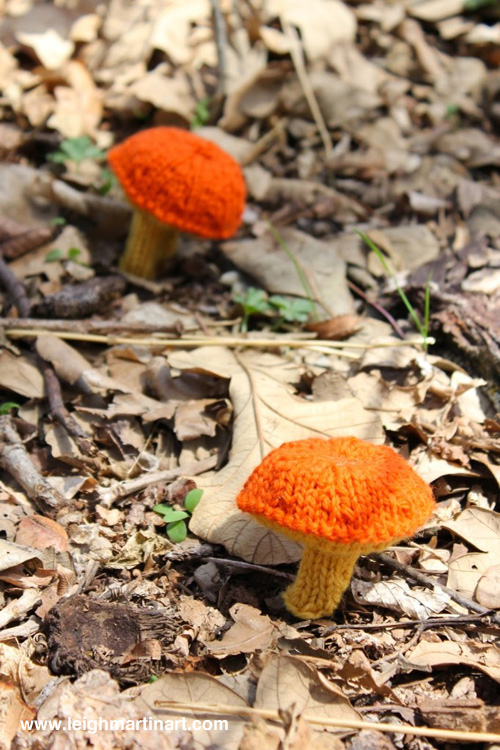I've knitted a lot of mushrooms (including boletes) over the past couple of years, and this is by far the largest one. King bolete is an impressive specimen, and I would love to make another that's even closer to the large end of the scale. How exciting it must be for the mushroom forager to come across one of these out in nature!
This species was knitted as part of my 52 Forms of Fungi project. See more forms for the project here.
For the holiday shoppers - I have prints and knitted fungi available in my shop!





